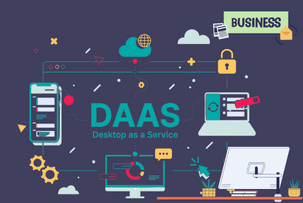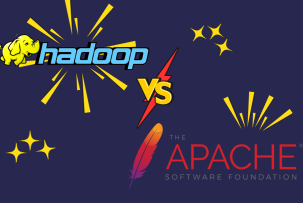Unveiling Kubernetes Architecture: Concepts and Best Practices
15:07, 15.01.2024
An Introduction to Kubernetes
Kubernetes is a platform that functions by automating containerized apps’ management, deployment, and scaling. This open-source soft was designed by Google, but right now it is maintained by CNCF. Lots of organizations choose this software because Kubernetes is the most efficient and powerful method of container maintenance.
Core Concepts and Terminology
To understand the basics of Kubernetes, let’s start by exploring the major terminology and core concepts.
The first thing to understand is Pod. This term is used to name the smallest deployment unit. It characterizes the instance of the running process. Pods provide storage volumes, and also config data required to run the containers in the specific pod.
Another important thing to know about in Kubernetes is ReplicaSets. These sets guarantee that a certain number of pod copies and are functioning at any specific time. In case of the termination or failure of the pod, the ReplicaSet will make an automatic replica to replace the terminated one.
The higher-level abstractions are called deployments. They provide rollbacks and rolling updates for the app. They help to define the state of the app and the software determines all the needed details to reach the state.
With services, you are exposing the app to others or even to other pods. The services function as a load balancer that divides the traffic and sends it to the needed pods.
Here were mentioned only a couple of important Kubernetes terms, of course, there is so much more to learn about and explore regarding this topic.
The Advantages of Leveraging Kubernetes
There are lots of advantages to utilizing Kubernetes for container orchestration. Not to overwhelm you with every little detail, let’s discuss only the major benefits which are the following:
- Availability. With the usage of Kubernetes, it is possible to make applications highly available due to a couple of automated processes such as restarting the failed pods or rescheduling on healthy nodes. It also guarantees that the application won’t have a downtime during the deployment of the new version, due to the rollbacks and rolling updates.
- Scalability. It is so easy to scale the application with Kubernetes, and that is possible by deleting or adding pods according to the necessary. In addition to this, it's possible to use auto-scaling that is determined according to such characteristics as CPU utilization for instance.
- Portability. With Kubernetes, users have access to the portable platform for applications managing and deploying. It can function in different environments such as public clouds, data centers, and hybrid setups. Also, portability allows to move the applications between various platforms.
- Efficiency of the resource. The optimization of the resource is in the packaging of several pods in every node. It is also possible to use such features as limitations of the resources and requests for the control purposes of how much memory and CPU every pod can use.
All these Kubernetes’ advantages show how helpful this software is for application infrastructure modernization. This may be used by lots of companies who are actively searching for such methods.
Deconstructing Kubernetes: Its Architecture and Core Components
Here are a couple of elements that can help with understanding how Kubernetes functions. The first important component is the master node. This type of node is used for the overall control of the system and management of the cluster. The master node consists of several core elements such as a controller manager, API server, and scheduler.
The next inseparable part of Kubernetes architecture is the worker node. These nodes are responsible for finishing the tasks that were sent to the worker nodes by the master node. Every such node runs a container runtime for the managing of the containers’ execution.
One more important element of Kubernetes is Kubelet. It is a specific agent that functions on the worker node and is responsible for managing the containers and pods on the node. Kubelet interacts with the master node for the reposting of the node status and receiving instructions.
etcd is a value that stores the config data of a cluster. It helps with the proper synchronization and coordination that occurs between the worker and master nodes.
These are only several elements that are in the architecture of Kubernetes. However, it is crucially important to know about them and understand how they interact within the system.
Application Deployment
If speaking generally, the application deployment consists of such steps as specifying the needed application state after which Kubernetes tries to reach this state. The application deployment may be different depending on the users’ preferences and requirements.
The deployment object in Kubernetes specifies the needed state and everything functions in such a way that the desirable state is achieved. So that users don’t need to manually deploy and update applications. That will save much time and can exclude the human factor error.
The basic strategies which are available out of the box are “rolling update” and “recreate”. If something doesn’t work for you with standard options, then it can be easily customized with the following delivery strategies such as canary, green, and blue deployments.
A ReplicaSet is an object that is responsible for the functioning of several instances of a pod and guarantee that a specific number of pods is functioning at all time. Its purpose is to ensure that the apps functioning in the pods don’t have downtime and have all the needed resources. It is especially crucial in case one or several pods fail. During such failure, ReplicaSet creates a new pod’s instance. The system regularly checks whether the case number of running instances doesn’t coincide with a certain number, so it immediately creates another instance. In case of an extra one, the system deletes this unnecessary one. Deployment is the high-level standard that manages ReplicaSets and helps with declarative updates and lots of other features. All the instructions recommend that users should not work directly with ReplicaSets.
One more great option is Helm. This package manager helps with defining the app as a set of charts or versioned and reusable components. These charts are extremely convenient due to the possibility to distribute and package applications. They are generally easy to install and share on any cluster.
Moreover, users have variants of using DaemonSets for running a pod’s copy, StatefulSets for the deployment of stateful apps, and Jobs. This variability of flexible options can suit different app requirements.
Managing Applications
The major benefit of Kubernetes is the possibility to scale apps horizontally. It means that users can delete and add pod replicas to correlate with the existing demands. There are a couple of mechanisms available in Kubernetes to manage and scale apps in the most effective way.
It is possible to adjust everything manually by modifying the replica count. For instance, in case a user has a Deployment with 4 replicas and plans to scale it to 6, it can be easily done by changing the replica count, and the additional replicas with be created.
Also, there is a great option of auto-scaling, that automatically changes the replicas’ number depending on such data as CPU utilization. Users can easily manage auto-scaling by specifying the max/min number of replicas and target utilization. In such a way, Kubernetes will detect the data and scale apps according to these metrics.
Except for the scaling option, users can try different features and tools for the management of the process. The easiest way to manage is by utilizing selectors and labels in order to group the resources. For sensitive info management, it is recommended secrets and configMaps.
Monitoring Troubleshooting in Kubernetes
This container orchestration platform prioritizes troubleshooting and monitoring because that is highly important for the better performance and health of the apps. With Kubernetes, users can enjoy the usage of several tools that help with effective debugging and monitoring of the applications.
One of the main tools is considered to be kubectl. This command line is helpful for the detection of the viewing of the logs, inspecting the cluster’s state, and realizing commands within the containers. With this tool, users can collect data about the app, and in such a way diagnose the issues.
Also, Kubernetes is integrated with several awesome monitoring solutions such as Elasticsearch and Prometheus. These tools are beneficial for advanced analytics so that users can visualize/gather data, set up the alerts, and of course deal with the troubleshooting of the performance issues.
When speaking about the methods of health checking the apps, Kubernetes offers such options as readiness probes and liveness probes. Readiness probes are responsible for detecting whether the app is ready for the traffic’s acceptance, and liveness probes detect whether the app is functioning correctly.
Wrapping Up: Key Takeaways
One of the most powerful container orchestration soft is Kubernetes. This application container provides management, deployment, and scaling. With the variability of available features, this container solution becomes a perfect variant for companies that embrace cloud-native computing.
In the article, we have discussed monitoring troubleshooting, management, and deployment of applications, Kubernetes architecture, and some of the major benefits. Moreover, we have shared some helpful terminology for beginners.
Once you have understood the main concepts and principles of Kubernetes functioning, you can go deeper into the topic and explore more specific information. Experimenting with the awesome platform will unlock lots of potential for beginners as well as for experienced users.


